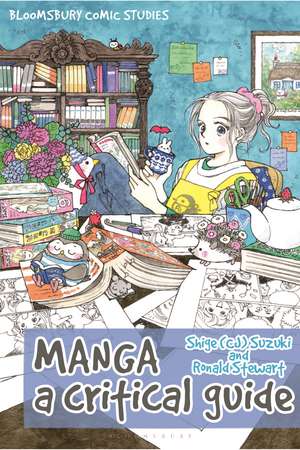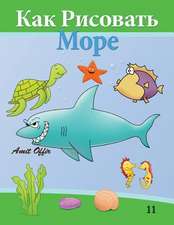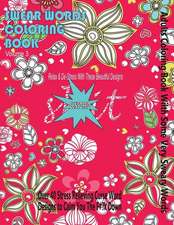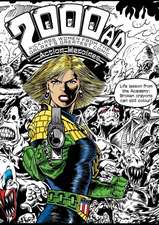Manga: A Critical Guide: Bloomsbury Comics Studies
Autor Dr Shige (CJ) Suzuki, Dr Ronald Stewarten Limba Engleză Hardback – 19 oct 2022
| Toate formatele și edițiile | Preț | Express |
|---|---|---|
| Paperback (1) | 155.03 lei 3-5 săpt. | +30.25 lei 7-13 zile |
| Bloomsbury Publishing – 19 oct 2022 | 155.03 lei 3-5 săpt. | +30.25 lei 7-13 zile |
| Hardback (1) | 438.67 lei 6-8 săpt. | |
| Bloomsbury Publishing – 19 oct 2022 | 438.67 lei 6-8 săpt. |
Preț: 438.67 lei
Preț vechi: 539.62 lei
-19% Nou
Puncte Express: 658
Preț estimativ în valută:
83.98€ • 87.62$ • 70.40£
83.98€ • 87.62$ • 70.40£
Carte tipărită la comandă
Livrare economică 12-26 martie
Preluare comenzi: 021 569.72.76
Specificații
ISBN-13: 9781350072350
ISBN-10: 1350072354
Pagini: 280
Ilustrații: 26 bw illus
Dimensiuni: 156 x 234 mm
Greutate: 0.57 kg
Editura: Bloomsbury Publishing
Colecția Bloomsbury Academic
Seria Bloomsbury Comics Studies
Locul publicării:London, United Kingdom
ISBN-10: 1350072354
Pagini: 280
Ilustrații: 26 bw illus
Dimensiuni: 156 x 234 mm
Greutate: 0.57 kg
Editura: Bloomsbury Publishing
Colecția Bloomsbury Academic
Seria Bloomsbury Comics Studies
Locul publicării:London, United Kingdom
Caracteristici
Includes guides to significant works from a range of historical periods, genres and creators, including Tezuka Osamu, Hasegawa Machiko and Otomo Katsuhiro
Notă biografică
Shige (CJ) Suzuki is Assistant Professor of Modern Languages and Comparative Literature at Baruch College, City University of New York, USA.Ronald Stewart is Professor at Daito Bunka University, Japan. He has published widely on comics and Manga, including as a columnist for Japan's largest national newspaper, the Yomiuri Shinbun.
Cuprins
Series Editor's PrefaceList of FiguresAcknowledgementsNotes on Japanese Names and Terms 1. Introduction 2. Historical Overview Part I: The Emergence of Manga to 1945 The Problem of Start Points and Definitions Manga's Emergence in Modern Periodical Print Media Towards Character-Driven Narratives and a Profession Children's Manga Growth, Media Interplay, and the Dark Valley of War Part II: 1945 to the PresentFrom Ashes and RuinsExpanding and Diversifying ReadershipsManga Goes MainstreamAfter the Death of "God" 3. Social and Cultural ImpactControversy and Censorship Gender and SexualityHistorical RepresentationMedia Mix and Dojinshi Participatory Culture Cultural Status and Institutions 4. Critical UsesBounds of MangaFormal and Visual Analysis Biographical Approaches Gender and Sexuality Studies Approaches Historical Questions and Historical Representation 5. Key Texts Appendix: GlossaryList of MuseumsResourcesIndex
Recenzii
As someone who works on mostly the western tradition in comics I have long wanted to have an up to date work that provides both a historical overview of manga and deals with its social and cultural impact both in Japan and globally. Suzuki and Stewart have delivered that work. It will be both a useful reference work for comics scholars wishing to engage with manga and a useful text book for classroom teaching that wishes to encompass the global forms of comics.
Japanese manga culture is a vast universe in terms of both its scale and diversity. To the uninitiated, the question of where and how to best enter this universe is often hard to answer. To existing fans of specific artists and works, the question is often how to break through a type of tunnel vision and place one's own interests in some sort of larger context. And as more and more people need to teach, or want to write, about manga, the need for an updated guide becomes essential. Kudos to scholars Shige (CJ) Suzuki and Ronald Stewart for their stellar work with Manga: A Critical Guide.
Japanese manga culture is a vast universe in terms of both its scale and diversity. To the uninitiated, the question of where and how to best enter this universe is often hard to answer. To existing fans of specific artists and works, the question is often how to break through a type of tunnel vision and place one's own interests in some sort of larger context. And as more and more people need to teach, or want to write, about manga, the need for an updated guide becomes essential. Kudos to scholars Shige (CJ) Suzuki and Ronald Stewart for their stellar work with Manga: A Critical Guide.














